We chatted with Randolph native Femita Ayanbeku about her journey to become the fastest female amputee in the United States.
Written by Maria Allen
Photography by Derrick Zellmann
From tragedy to triumph, Femita Ayanbeku’s life story is a testament to the power of positivity and hard work.
At 11 years old, Ayanbeku and her sister were riding in the rear-facing seat of her cousin’s station wagon when they were involved in a terrible car accident. The driver lost control of the vehicle and as the car spun around, the doors opened and the girls were thrown out, landing on opposite sides of the road. Miraculously, both sisters survived the crash, but the extent of Ayanbeku’s injuries forced doctors to amputate her right leg, below the knee.
While the accident certainly changed her life, Ayanbeku has never been one to let her disability slow her down. In fact, ever since she received her first running blade in November of 2015, she has been on a fast track to success. She is currently ranked the fastest female amputee in the United States and looking forward to representing Team USA at the Paralympic Games in Tokyo next summer.
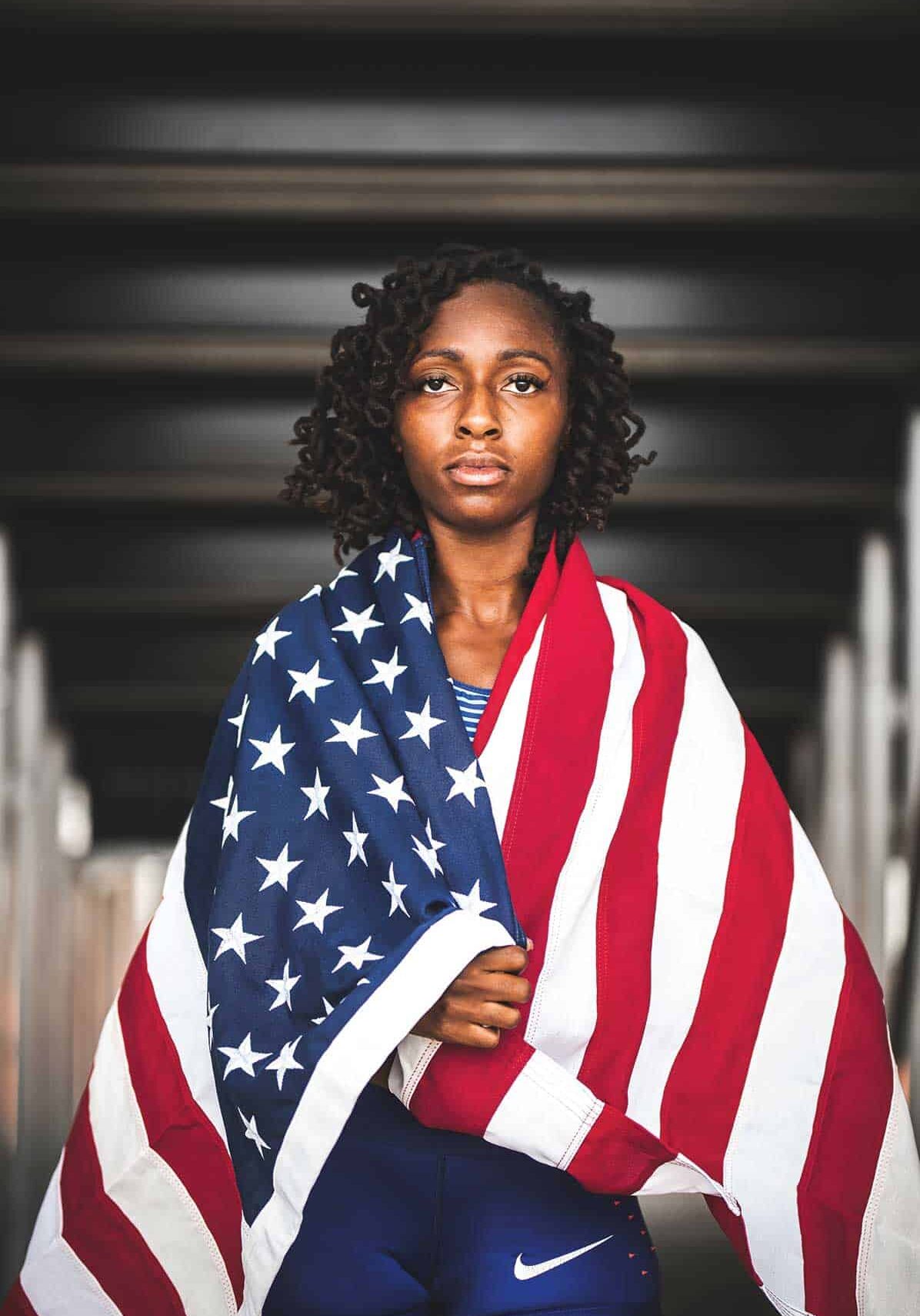
When you were young, did you ever dream of becoming a professional athlete?
It never crossed my mind. The only sport I was really interested in was basketball and that’s because my older sisters used to play and I looked up to them. Since I had my accident at such a young age, I didn’t even think it was possible to be a respected professional athlete.
How did losing your leg affect your self-confidence?
My self-confidence was definitely damaged at a young age because of the different experiences that I faced. There were some kids that made fun of me when I went back to school and I was very challenged with the thought of how boys would perceive me. Growing up, I didn’t have the confidence in myself physically because my appearance (being an amputee) was something I was not happy with until my young adult years.
After graduating from college, you founded the nonprofit Limb-It-Less Creations. What is the mission of this organization?
The mission of Limb-it-less Creations Inc. is to create awareness and provide support to the amputee community as well as people with physical disabilities. I started this organization because growing up, I did not have a sense of community with people that looked like me, who could understand me on a deeper level. Limb-it-Less was not just for the disabled community. It was also to educate and inform the people around us so that the word disabled was not always associated with pity and sadness.
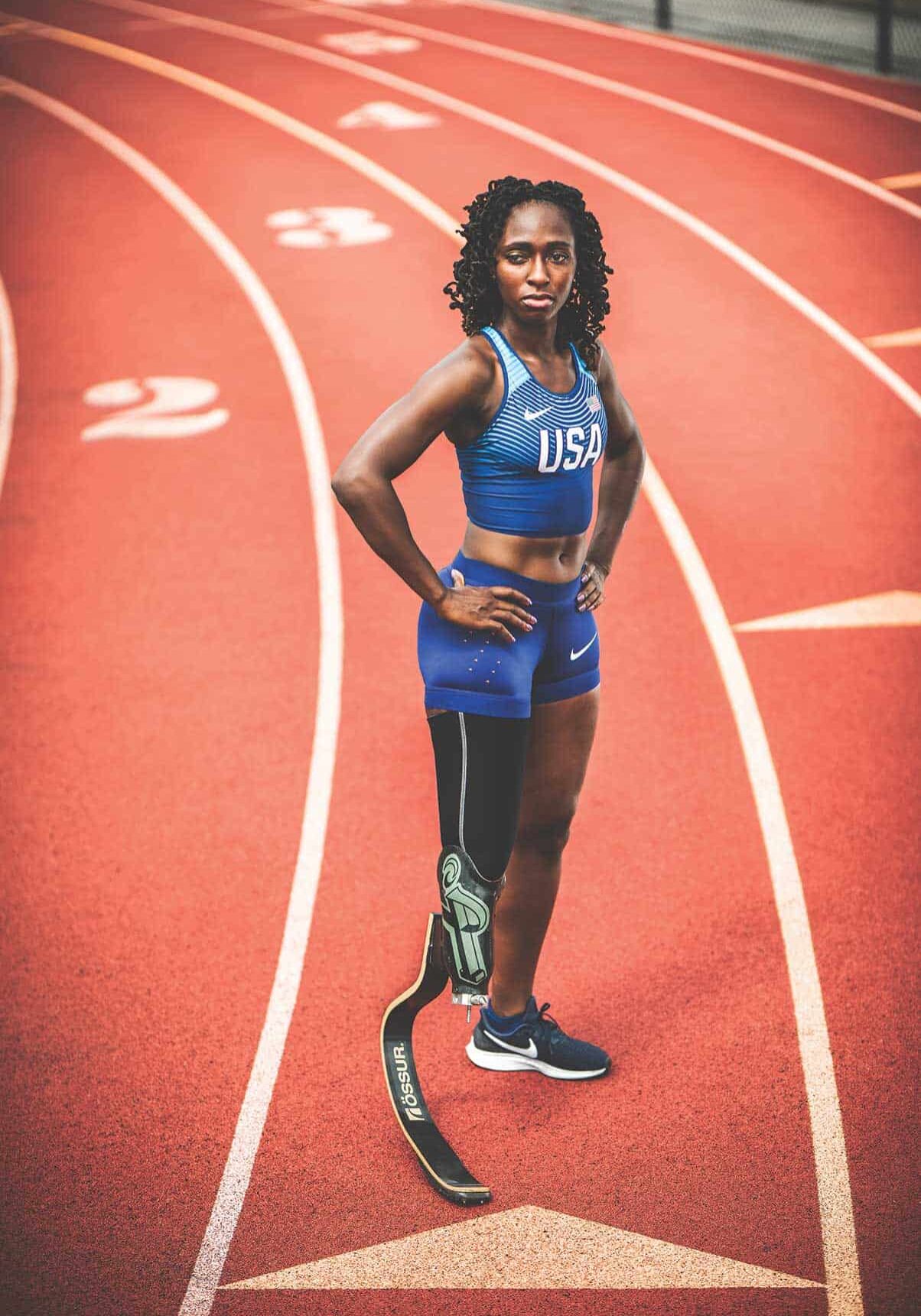
When were you first introduced to track and field?
When I was 23 years old and received a running blade as a donation from the Challenged Athletes Foundation and Ossur [a global leader in orthopedics]. I met Paralympic athlete Jerome Singleton on the day that I received my blade and he introduced me to my coach, Sherman Hart.
Can you describe what it felt like to try on a running blade for the first time?
The first time I put on a running blade I fell in love. It’s funny when I tell the story now because I would have never thought I would be the one to say I love to run. I have now lived most of my life as an amputee so I don’t remember what it is like to have two feet, but when I run with my blade, it allows me to imagine what having two feet would feel like. Running with my blade gave me a feeling that I thought I could never have again.
Who or what inspired you to start training for races?
My coach and Jerome Singleton are the two people who inspired me to start training. When I met the two of them, I thought that I would just be learning how to run and use my blade properly. But before I knew it, I was running in collegiate races and then the Paralympics.
In the spring of 2016, you went to the Paralympic Team Trials in Charlotte, North Carolina. You ended up winning the 100-meter race and placing second in the 200-meter event, qualifying for the Rio 2016 Paralympic Games. Were you surprised by this outcome?
I was more than surprised when I won the 100-meter race because I did not know what to expect. But my coach saw something in me that I didn’t, and he worked with me and continued to believe in me and now I am the fastest female amputee in the United States.
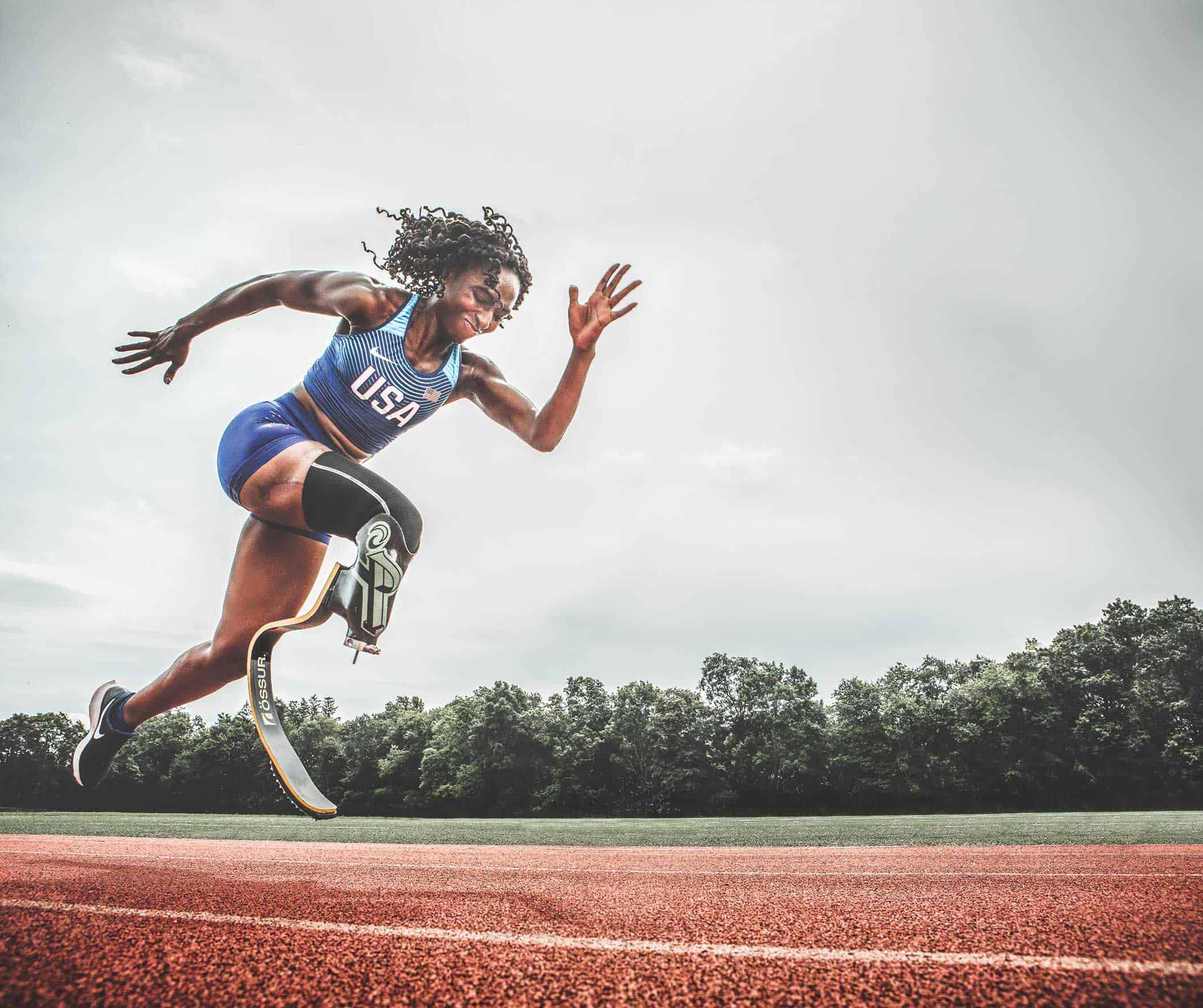
What did it feel like being part of Team USA? Do you have a favorite memory of the experience?
Being part of Team USA was absolutely incredible. My favorite memory, by far, was meeting President Barack Obama and Michelle Obama. After the Paralympic Games in 2016, the entire team was invited to the White House and that is something that I will cherish for the rest of my life.
You must have been disappointed when the Tokyo 2020 Paralympic Games were postponed due to the coronavirus? Has the pandemic affected your ability to train?
I was definitely disappointed when Tokyo 2020 was postponed, but of course it is understandable and that is what needed to be done. Overall it is a bittersweet feeling because I felt ready to compete this year, but nothing is ever perfect, so having the opportunity to take this year to focus on the little details is not so bad either. My training was at a complete halt when the coronavirus first hit. But going outside to the track and being creative with my training has allowed me to stay on course.
In addition to being an athlete, you work as a personal trainer. What are your favorite exercises?
I am all about a full-body workout. I’m not one of those trainers that focuses on one area at a time, I am always looking for exercises that can work the whole body. My favorite exercise would probably be burpees. It’s a love/hate type of thing because they hurt, but they are so good.
How often do you work out and do you follow any specific eating or wellness habits to maintain your strength?
I work out six days per week and I maintain a high protein diet.
You seem to have a positive attitude and a strong sense of self-confidence. Is that something your parents instilled in you?
My positive attitude and self-confidence is something that I had to build, but it was definitely with the help of my family and close friends. One thing my parents instilled in me is that God saved me on that day for a reason, so being positive about life is all I’ve ever known. I grew up knowing that I had a purpose and I began to live in that purpose and it has gotten me this far.
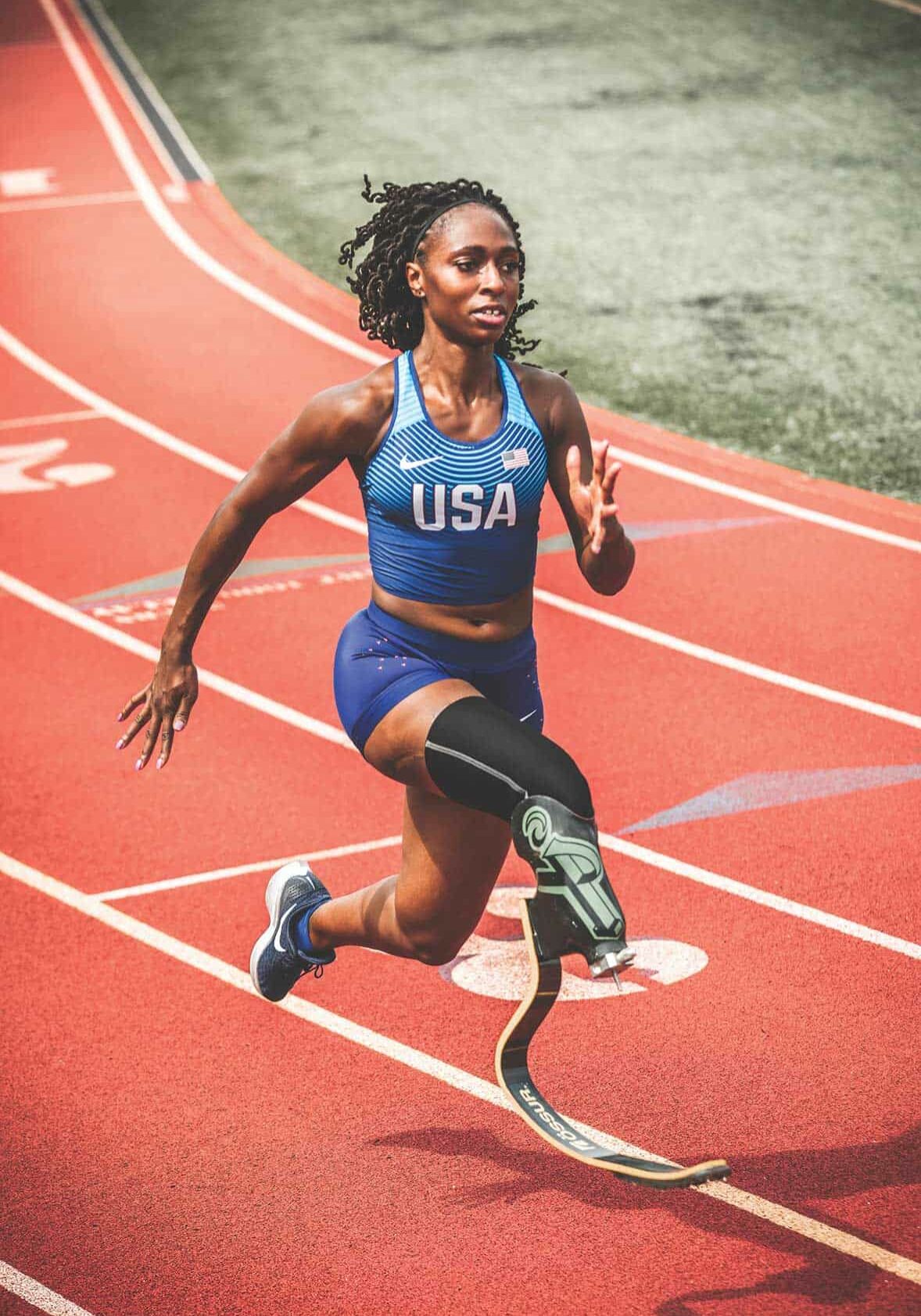
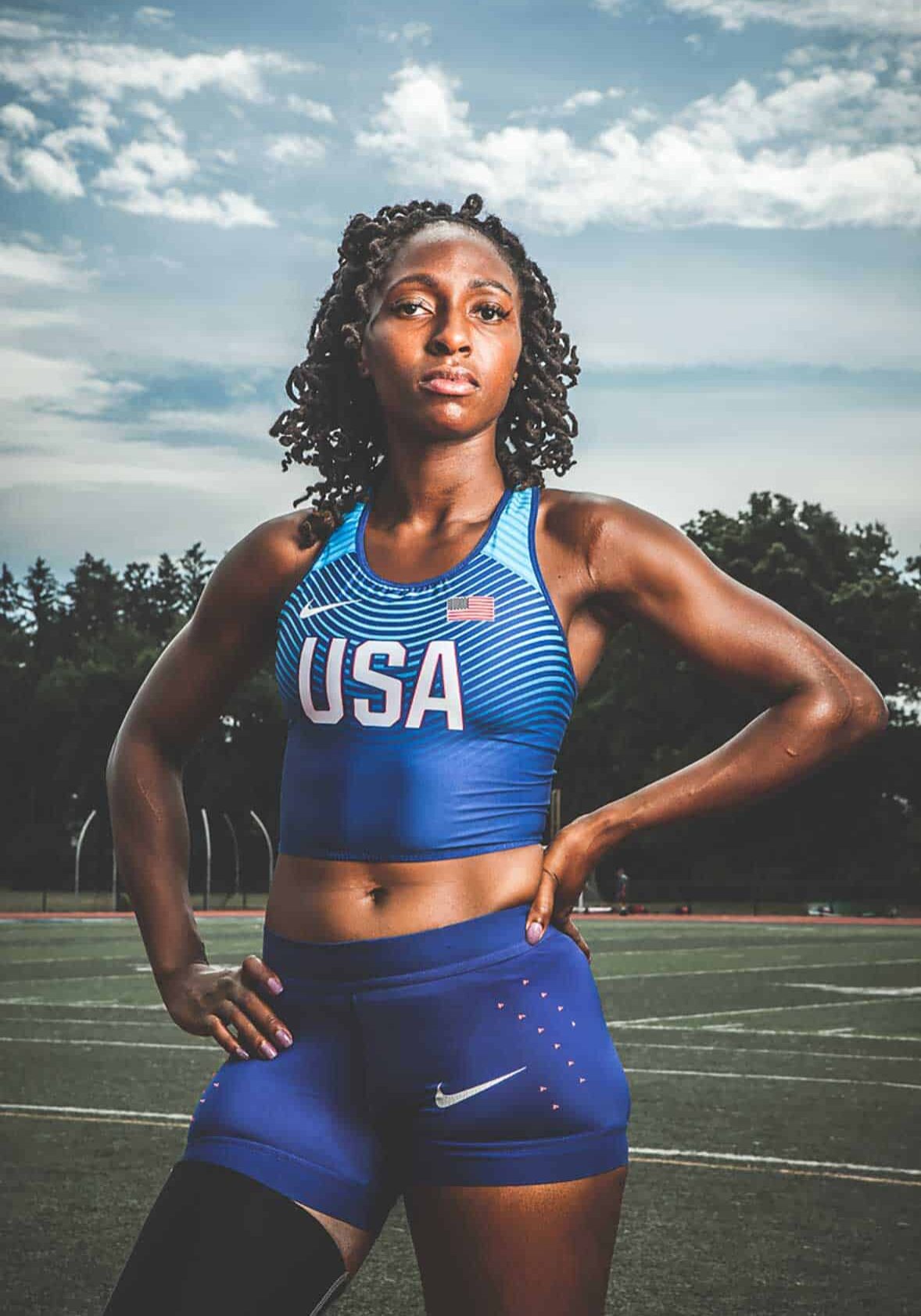
Outside of running, what else are you passionate about?
I am very passionate about working with young people. I do public speaking and over the past few years I have spoken at several different schools and students of various ages. I think it’s important for kids to grow up meeting people who can show them that life may throw you curveballs but giving up is not the answer. I also volunteer every year at the Boston Youth Jamboree. I love to see the kids running around and I love all the questions that they ask. I know once I retire from track and field, I will find my way to helping youths and being a role model for them.
If you could send a message to young aspiring athletes, and young women of color in particular, what would it be?
There is always going to be a battle so don’t let the struggles of today deter you from what you want. The only person who can stop you from achieving your goals is yourself.
What are your hopes for the future?
My hopes and dreams for the future would be to become the fastest female amputee in the world. I am currently third in my classification. I also want to give back and be a role model to young people.
Follow Famita Ayanbeku on Instagram
@femitaayanbeku and teamusa.org.
